They’ve done it. They’ve finally done it.
Square Enix took on a tremendous challenge when they decided to remake one of the most beloved and important classics of all time, a game critically acclaimed for its narrative, pace, charming characters, and the successful jump between the ages of 2D sprites and 3D graphics. Final Fantasy VII is a game that is engraved in the memory of many fans, one that is held close to heart and filled with nostalgia and plenty of emotions. How could that game be translated to today’s state of the art? What could be done? Or better, could it be done at all? Well, most of those questions can only be answered partially here, but hell, Square Enix certainly proved a point that it can still deliver the same quality standard it did back during the original Playstation.
Midgar, the short end of the stick
The original Final Fantasy VII is a masterful classic, for sure, but it is not all glory. If we could call for a flawed part of it, guess what, it is exactly its very beginning, which is the part being remade here, twenty three years later.
The Midgar chapter, back in the original Playstation, felt like a dragged on prologue. It had an amazing concept for a city that was ruled by this one single, powerful, greedy, cruel corporation named Shinra. In a way, Midgar was like this disastrous possible outcome of the free market model and a minimal state, where monopoly over a critical public resource turned a company into the very government body that ruled over everyone, with an iron fist of dictatorship under the guise of “promoting progress”.
Shinra was ruthless, dividing the city into blocks and putting the poor and workers living underground in slums. It brought technology and innovation at many points, but the cost was a divided society and a dying planet. That’s where the story of Final Fantasy VII begins, when Cloud, former elite military, decides to help a small eco-terrorist group bomb one of the city’s reactors that is sucking the planet dry of life.
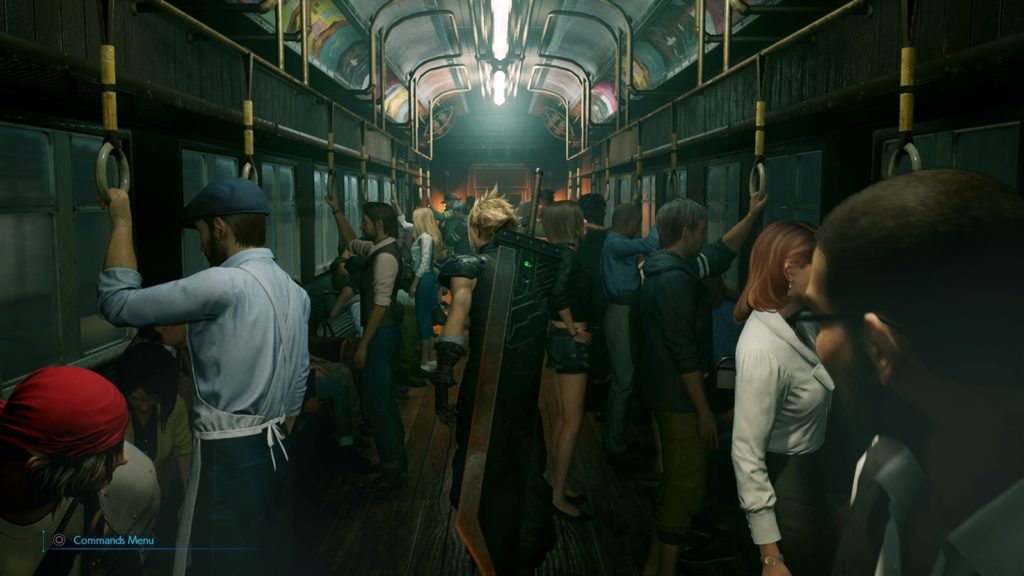
The original game and the remake both retain these ideas, albeit the remake works around to make things feel more familiar with modern day. Shinra, back in the original, is more like a comical company with lousy villains that is clearly evil and full of bad guys. You could only see a glimpse of light within it when dealing with some random goons. In general, the company represented evil at its worst, with a comical tint to it. The remake, however, paints Shinra like this serious corporation with dubious work ethics, putting everyone under a leash with typical propaganda and well-known office mantras of neoliberalism. It represents much better our modern society, where companies now try to look clean, beautiful, and friendly only to hide predating methods and terrible work ethics.
In a way, this comical-like energy from the 90’s Shinra overwhelmed the original’s Midgar arc. Every part of it felt forced in a way to believe the company was just plain evil and had to be destroyed, while the Avalanche was certainly right and there were no questions asked. The game would only start to create doubts about what was happening much later. Cloud and his group would be like bees being taken from one place to another just for the sake of presenting the general idea about life, death, reincarnation, and the planet. It was a rudimentary introduction to a tale that slowly grew to a steady pace and intense emotional events way after that. It worked, certainly, but after playing the full game it felt as if Midgar was a part that was lacking.
The Final Fantasy VII Remake was handed that area to deal with. It would be ONLY about Midgar. Yeah, it was dealt with the worst hand of the deck, but it also had the opportunity to explain it much better, turning that simple prologue into something deeper and more intriguing.
And it succeeds
Midgar’s ideas have aged pretty well. The corporate greed of the 90’s is still here, the pro-ecology groups are still strong, and the debate between the future of the planet and industrial progress has never been as hot. What Square Enix did here, however, was successfully update everything in those terms, while giving a much more mature feel to it.
The silly comedy is still here and there, such as with the senior officer and new recruit guarding the gate at Sector 7 slums, and a bit with the board of directors of Shinra, but the subtle changes make for a new layer of doubt to be thrown over Avalanche and Shinra. There are many reasons for that.
The first and most important is the visual presentation. Now we can see much more clearly how poor the slums are, how it feels dismal to look up in the sky and see the plate that holds the rich districts of Midgar. The social differences are clearer now. This means we can see more of why Avalanche fights for and how its tightly small circle interacts with the city where they live. However, it also gives a chance to look at the stunning upper districts, places with a mixture of classic european buildings and steel and steam. It is proper industrial advancement that seduces people, even the poorest ones, and you can hear and see many citizens trying to make sense of what Shinra is doing and that it is better for them to endure the hardships in order to bathe in that technology and wealth some day.
There are plenty of moments where you walk around the slums in the aftermath of disastrous events, and at those time you can hear people talking about the problems they are faced with, such as the trains stopping, worries about friends who worked near the reactor the exploded, people losing jobs, and so on. It is small, but when combined with the modern-day presentation of Shinra, it gives a depth to Midgar that really helps making the Remake a much better version of the original game during this chapter.
Oh, and the cast
Okay. We know Final Fantasy VII had an amazing core cast, but Cloud, Aerith, Tifa, Barret, and Red XIII were barely explored in the Midgar chapter of the original game, simply because, well, it was only six hours long and worked more as a prologue to present the setting than working on character motivations.
Now, however, we have nearly forty hours for our heroes to bathe in, except for Red XIII who shows up pretty late in the game. The result is, certainly, the most positive of the entire game.
Although the cast is the same, they are given tweaks to their personalities to better fit the modern Midgar and also to allow us to explore them further during this chapter. Cloud, for example, lost much of his comical touch and became like this traumatized war veteran who became truly tired of working for Shinra. He slowly starts to care about people during this new Midgar part and seems much more confused by his memories than he did in the original, giving him a much more tangible development, especially when paired with Barret and the members of the Avalance.
Barret, in particular, is even more amazing here. He is given much more care to his interactions with Marlene, making him feel more like a fatherly figure than before, yet he still retains his somewhat comical appeal and charisma to convince others to do what he think is right. This time, however, he is much more influenced by Cloud’s personality by now, which prompts subtle changes to his determination by the end which are very welcome.
The girls are given more life too. Aerith now, with her amazing expressive face, stands out as the positive energy with ocasional silliness. She is perhaps the least modified character, but in this remake it seems she hides much more knowledge than before, which in turn makes her a more mistifying figure.
Tifa is given a much needed sense of belonging. Although it still seems weird that she does not speak with Cloud about their past in this part, she now feels like part of the slums of Midgar, a place she holds close to heart and can truly call home. She is the one that links Cloud to the people of the slums, and by giving her this connection the game also manages to give her more feelings and questions to ponder as the group take on Shinra.
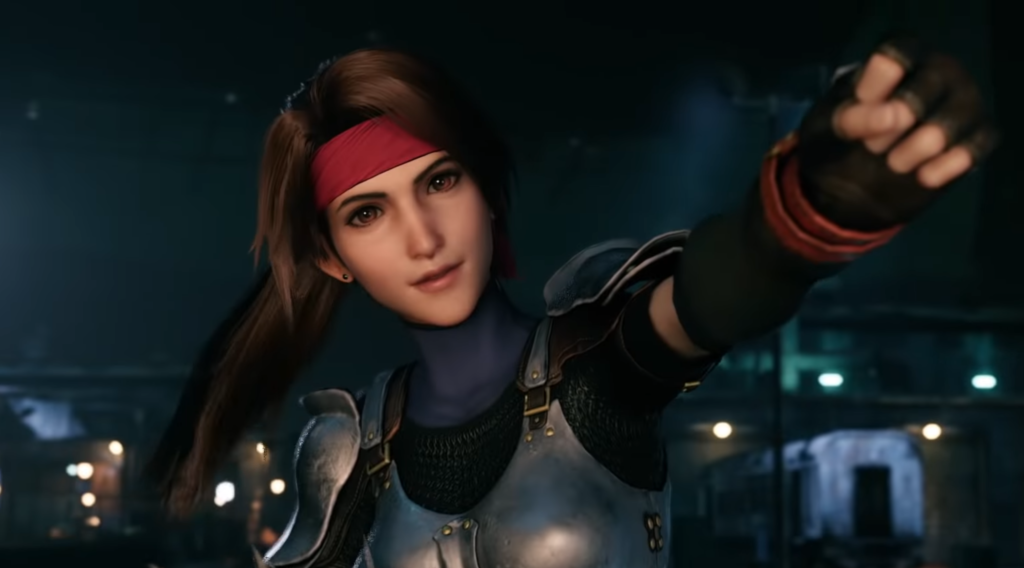
Of course, we have much more of Wedge, Biggs, and Jessie too. These minor characters in the original game are given some background, plenty of additional interactions with Cloud and Barret, and are tied to the story more closely than ever. They are, in fact, the shinning stars of the first part of the Remake.
Oh, and they all look damn gorgeous.
Well, graphically, the game is kinda of inconsistent. What we see here are stunning character models for the main party. Cloud, Tifa, Aerith, Barret, Jessie, Biggs, Wedge, Sephiroth, Reno, Rude. God damn, they are amazing. The models are extremely detailed and alive, with high-quality textures and motion blur effects thrown over, making them move more naturally than in any game I’ve seen in this generation.
The background, however, is a bit of a bummer. The first part of the game, namely the bombing mission and the section in the upper plate, has one of the most stunning visuals presentations of the current generation. Square Enix seems to have put a lot of effort into this part, with every brick in the wall becoming a thing to behold. The very late part, mainly the Shinra HQ, is also incredible, with lightning effects that made me just stop every now and then to behold the beauty of it.
The slums though, are given a much less fortunate treatment. The textures have low-resolution and sometimes it is so blatantly different from the character models it feels more like a bug than a proper asset. The door in Cloud’s room, the piles of garbages, the wires around fences, they are all reminiscing in quality to the ages of Playstation 3, which clearly contrasts with the stunning character models walking around.
In fact, Midgar of the original game already felt bleak and boring because of its generic slums style and here it seems nothing was done to make us feel like otherwise. There is a moment when you are in the upper plate and can look below and, heck, it is baffling that such a low-resolution texture is being displayed in a game of this caliber.
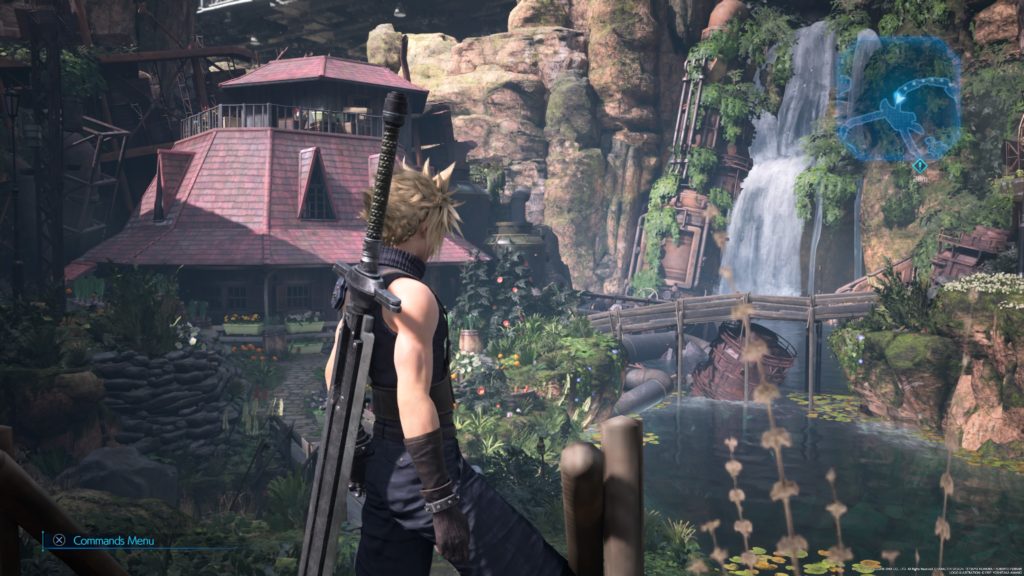
Well, you can simply follow the flow
The visuals may annoy us occasionally, but movement in this game is so damn good that you will likely ignore your surroundings most of the time. The cutscenes and the work of camera are incredible throughout the game and, when they are playing, it seems everything is upped in quality to a degree it feels as the Advent Children movie is a Playstation 2 game compared to this.
Combat also plays an important role on keeping your attention elsewhere, as Square Enix certainly achieved the ultimate version of the action-oriented combat they were seeking during the development and services period of Final Fantasy XV. I mean, combat is amazing. It is fast-paced, full of details, sparkling effects, swift movements, and a incredible slow-motion effect when you pause it for action selection.
It seems that the secret in turning Final Fantasy XV’s combat into a masterful experience was in merging it with the traditional Active Time Bar (ATB) of the franchise and the stagger mechanic of Final Fantasy XIII. This is done in the Remake in a way that also encourages you to keep switching between your party members, giving everyone a time to shine and a reason to level up and customize. What happens here is that your normal attacks do little in the way of damage, but they steadily increase your ATB. If you control a character, this increase is faster, however you also become the main target of your foes, which makes for a better option to switch to another character and take the opportunity to attack enemies from behind while also increasing their ATB.
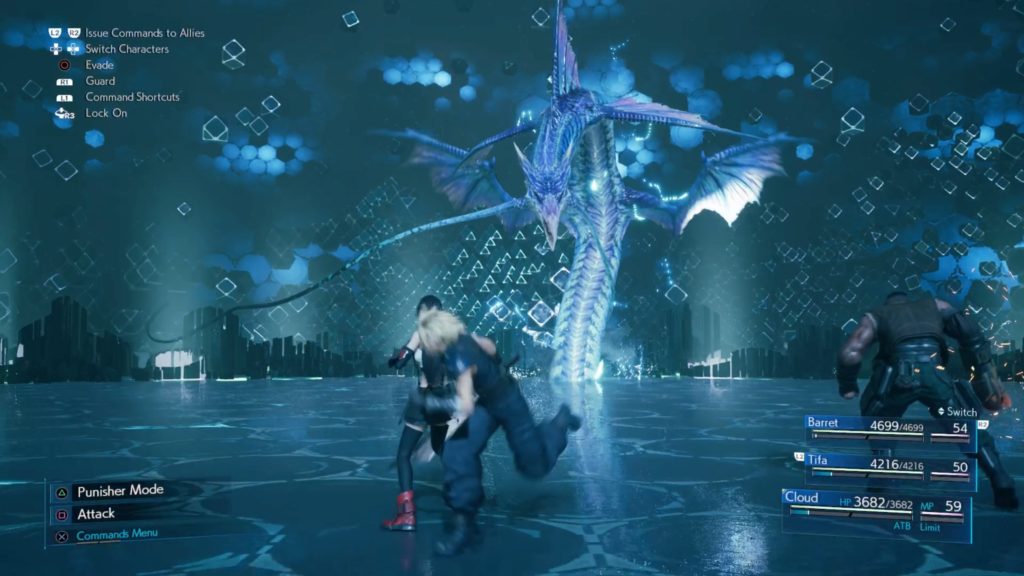
Once you fill an ATB segment, you can pause the game and select a spell, item, or skill to use. There’s where your damage will really come from, as well as your healing and buffing. It is an amazing dance between characters, flanking opponents, filling your ATB, and staggering enemies so you can unleash your heavy attacks when they are down. The pause effect, instead of completely pausing the game, slows down things almost to a halt, an effect that dramatizes a lot of what is happening during combat, which is amazing.
The fans of the original will also feel at home here because the materia system is basically intact, with the same degree of customization of the original game followed by a few tweaks to make sense in the new combat system. We have materias leveling up and giving you better magic to cast, we have the purple materias to add passive boosts, yellow materias to grant you new actions, green materias for magic, blue materias to link bonuses, and the red summon materias. It is all there, updated, modern, and proving that the original’s game system still kicks ass even today.
There is another layer of customization given to the Remake though. The equipment, while widely the same as before, with weapon, armor, and acessory with materia slots and basic attribute boosts, are now given further customization in form of a level system for weapons. As you level up your character and complete quests, you gain Skill Points, which you can use to level up weapons and select new bonuses to it, such as boosting attack, granting new materia slot, improving your defense, the MP recovery rate, and so on. Each weapon is likely to be made for the purpose of giving you a boost in physical damage, magical damage, materia capacity, or defensive qualities, but they all offer options to tweak these purposes to your liking.
So, what exactly has changed?
Well, surprisingly, very little. Despite the tweaks in scenario, characters, and the combat system, the game is still the same in terms of its narrative and formula. I was expecting some open-world elements to be inserted here and there, but the game retains the linearity of the original, divided in chapters for the sake of replayability. Each chapter is a story mission, taking you from one point to another and presenting you the very same events of the original game.
There are new acts here and there to give more depth to members of the Avalance and new characters of the slums, but most of the time you will deal with bigger, longer, and more impressive areas. The Train Graveyard, for example, which originally compromised of two or three screens to pass by, is now a 2-hour long dungeon with plenty of new cutscenes and events. This is the standard behavior of the game, focusing on expanding the original rather than change it.
The new technology provides us some very exciting moments too. The emotional aspect of the game is really bumped up by the new character models and amazing voice-acting, while the action parts are incredible to the eyes, making classical combat sequences and missions feel like something completely new and exciting.
In general, the game is a true homage to the original, reliving every chapter of it with new glory, better visuals, and giving it a deeper probe into the cast and their relationships. It does have some filer content, like a few pointless sidequests, long and boring corridors, and many parts where Cloud needs to squeeze or crouch to a terribly slow pace just to reach another area. These are minor though, and the overall experience is solid throughout the game. At least until the last five hours or so.
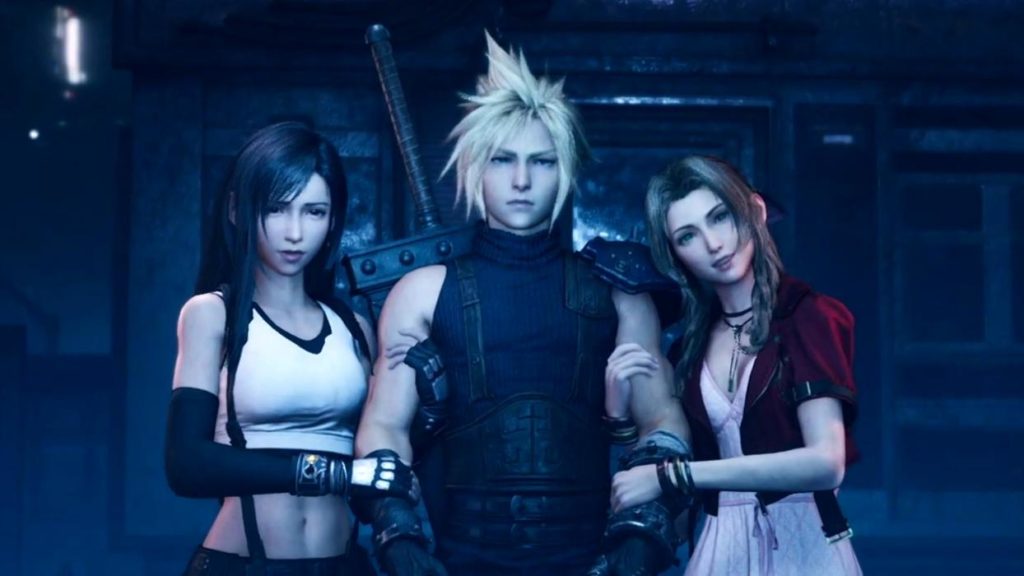
Yeah, the cherry on the top is poisoned
Sadly, the glory and fidelity to the original is brought down right at the end. I was expecting changes because, well, you wouldn’t want to end a game with a boss battle against a road-robot named “Motor Ball”, but what was done here is disastrous to say the least.
It starts when the game, which felt more mature than the original until then, changes what was a trail of blood to a trail of glowing ooze. After that, what happens is a downhill run to mediocre and traditional shounen-elements more easily found in works intended for japanese young teens. Yeah.
Deaths? No more. I mean, do not take them seriously. The script is here to save the ass of people who die because, well, you don’t want kids to see beloved characters dying, right? These changes certainly reduced drastrically the drama of the early parts of the game and, if this continues, it could certainly destroy the major plot point of the game in a chapter yet to come.
Life and death? Planet? Reincarnation? Nope. The game shifts its theme to Fate at this late hour. In a way, its ending is likely a repeat of Final Fantasy XIII, but here the society is not an utopia governed by god-like entities. Here the world is being ruled by a greedy corporation controlled by humans. Instead of following this very idea and pitching us against the lowly aspects of mankind in the end, the game turns to the cheesy aspect of “defying fate”, literally even. It simply destroys the momentum and dissonates with every early idea of the game.
Sephiroth too
Well, we all know Sephiroth today. However, the reasons why he became such a classic villain were not because he is a sexy tall long-haired dude with a massive katana and black robes. He grew because he was mysterious, unknown, completely out of reach for the heroes of the original game for at least half of the story. The only hint about Sephiroth in the Midgar chapter of the original was his sword and the trail of blood he left, all of that presented with a cryptic background theme playing. It was the moment when we said “Oh shit!” and where the game really started to leave behind the silliness and embrace its darker themes.
This time, however, it seems Square Enix just HAD to put Sephiroth in the game, a game where he was not supposed to even appear. The result is a random magical guy haunting Cloud with zero explanation for now. It feels forced most of the game, but what really breaks the aura of the villain are his late game appearances.
The fans of the original will see a finale very similar to the one of the full game, yet it happens during the group’s escape from Midgar, which doesn’t make much sense. Well, it doesn’t, but there’s a catch to it, mainly a script-built entity made just for the sake of giving an excuse to any change. I will not dig deep here to avoid spoilers though.
So…
Well, it is a thrilling ride. The game is perfect in mosts aspects and things only go sideways during the very last sequence of events. This wouldn’t be a problem normally, especially for me as I don’t really care about endings. However, this is not the end. This is the first chapter of an eternal classic. If the asspulls by the end can potentially affect the next installments, it certainly becomes much more of an issue.
I hope I am wrong and that all of this is just a red-herring, but I will now be really cautious about the future of this Remake until Square Enix reassures me that this is indeed still a Remake and not a silly retcon. Hell, if I wanted a new story I would much rather be playing Final Fantasy XVI by now.
Well, let’s live and see what happens.
Summary
-
Production
-
Content
-
Polish
-
Concept
-
Fun
